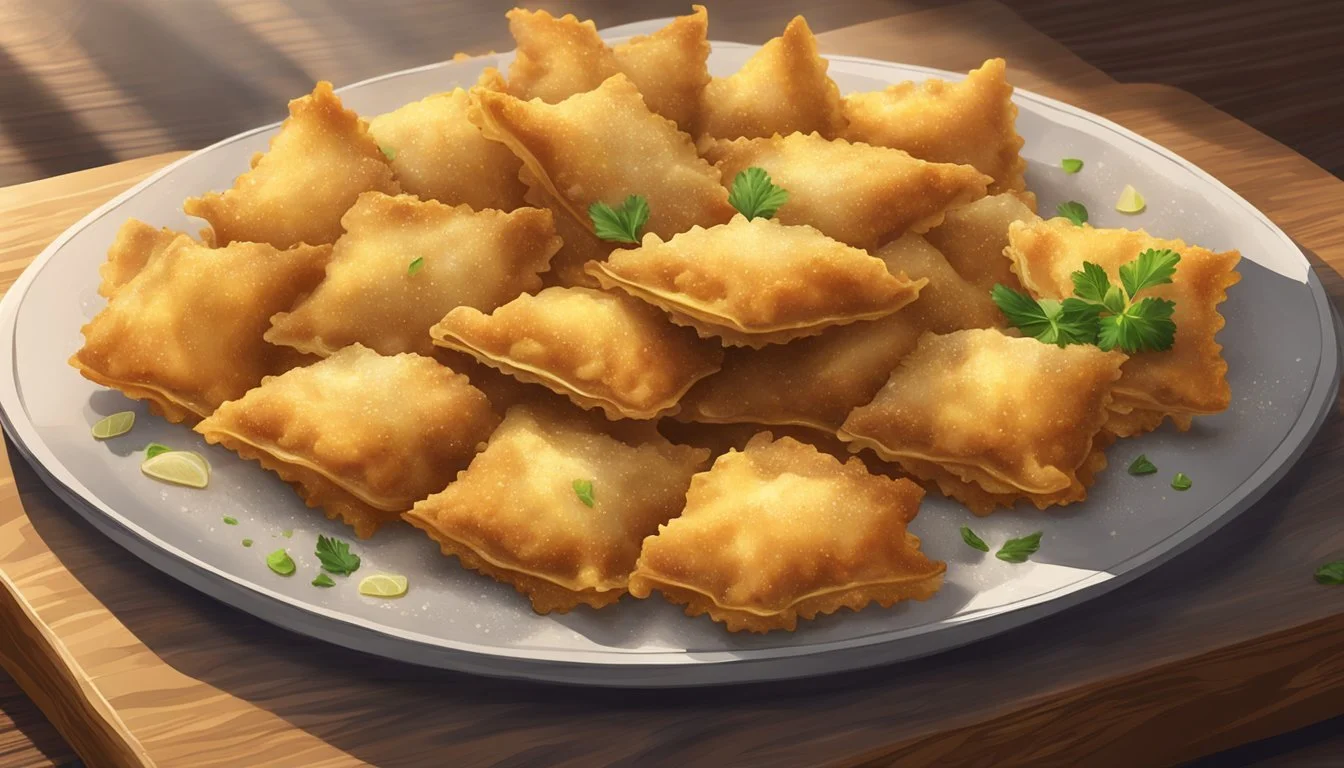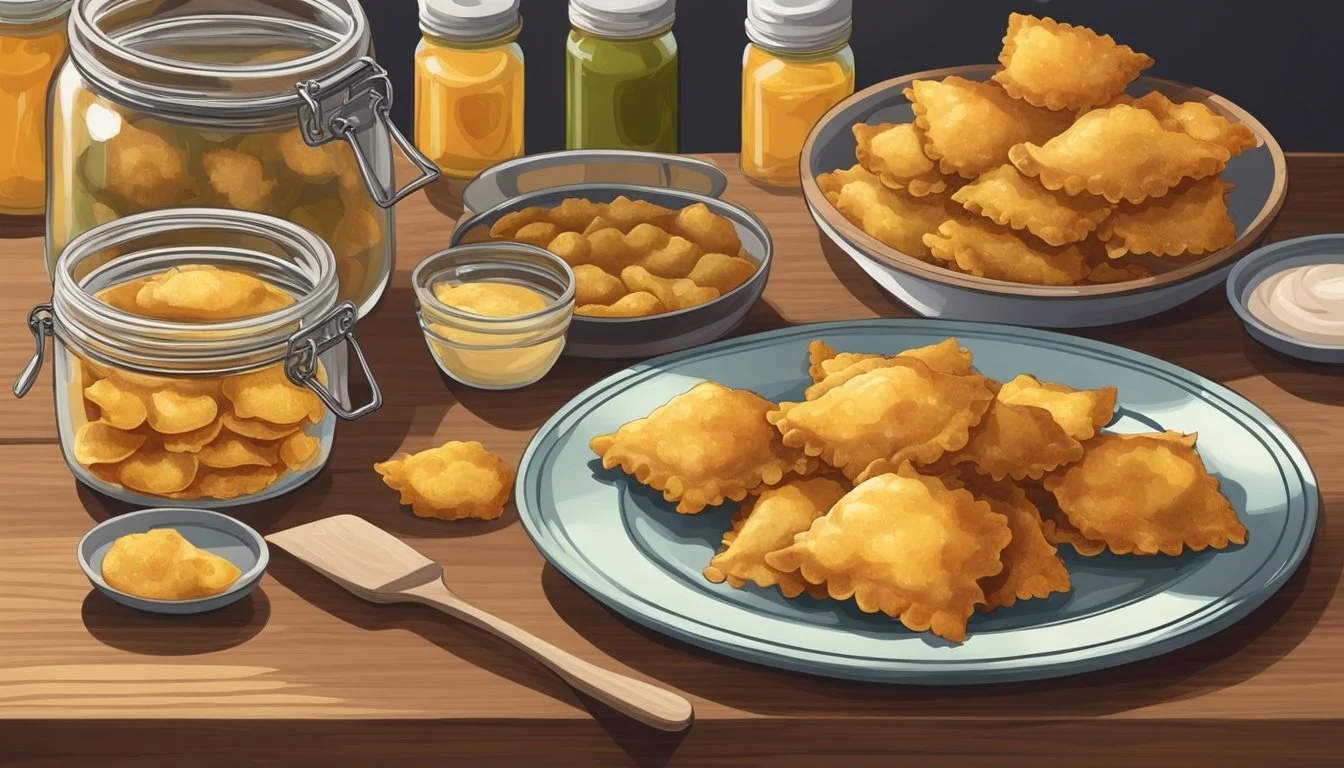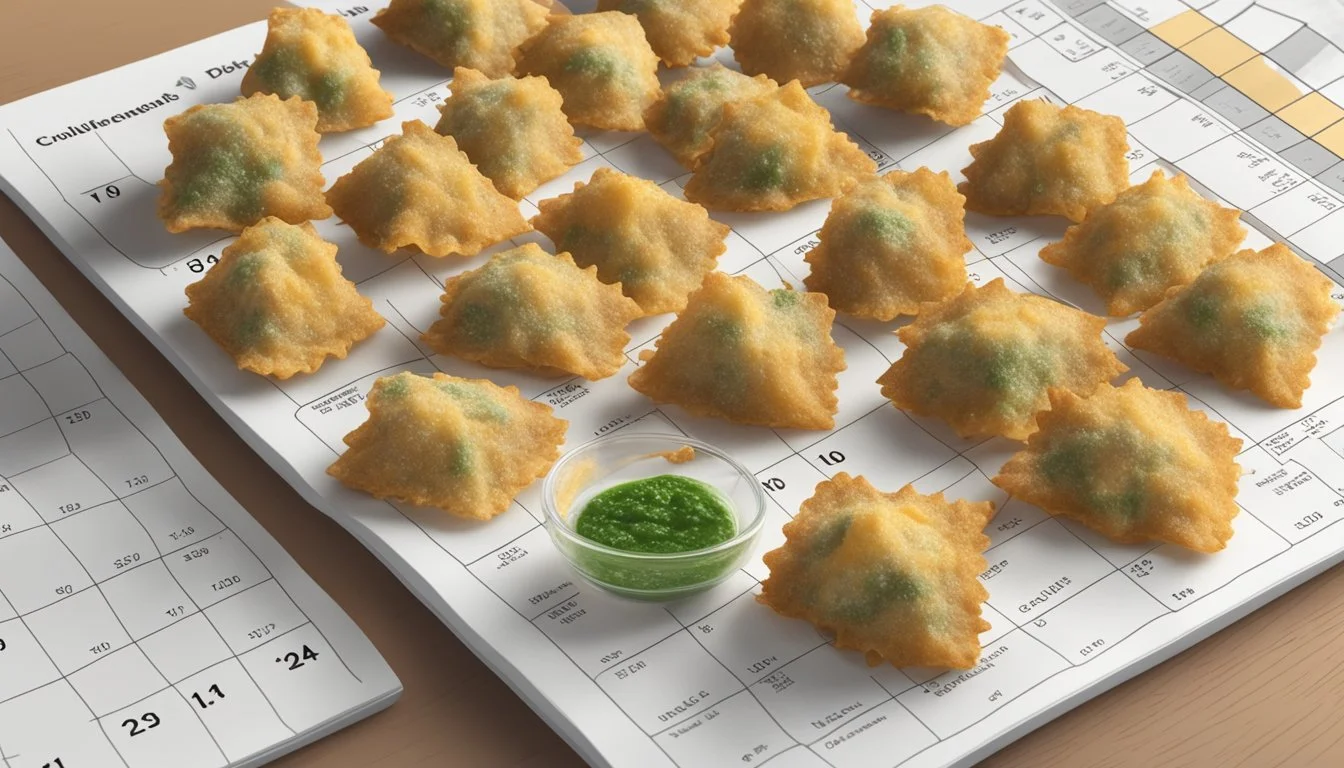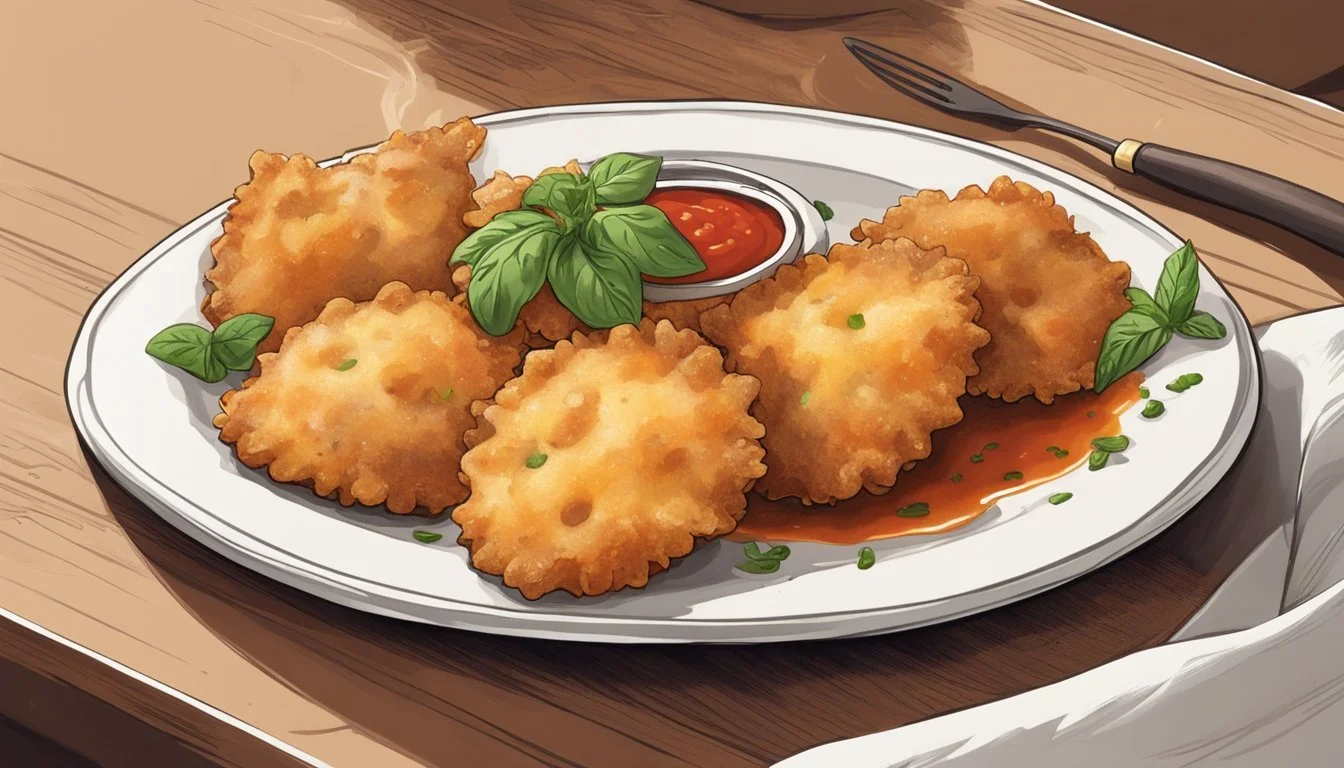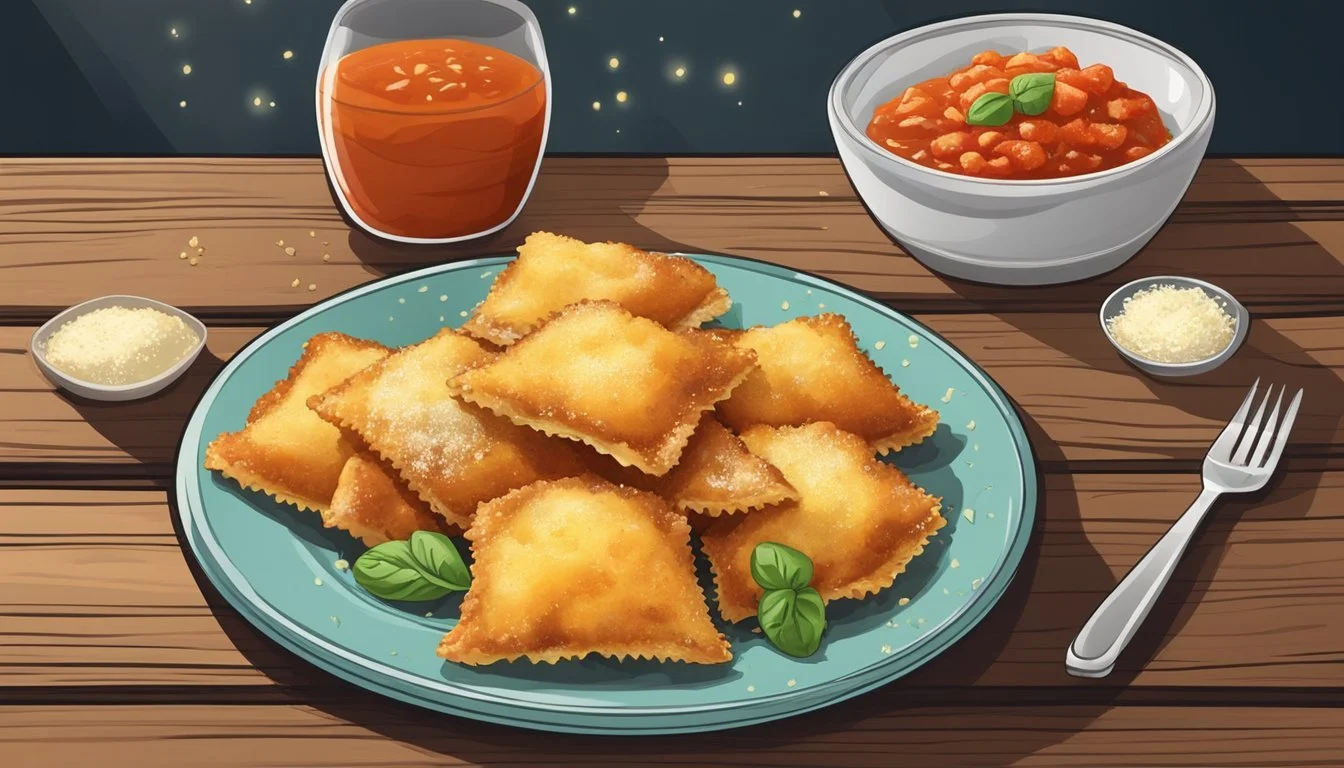How Long Does Fried Ravioli Last?
Storage and Shelf Life Explained
Fried ravioli is a delightful twist on the traditional Italian pasta dish, offering a crispy and savory experience that's hard to resist. When it comes to its shelf life, proper storage is key. Fried ravioli typically lasts for about 3-4 days in the fridge when stored correctly. Storing them in an airtight container helps maintain their quality and prevents them from becoming soggy.
Understanding how to store fried ravioli can make a big difference in preserving its taste and texture. For those who want to extend its shelf life, freezing is a viable option. In the freezer, fried ravioli can last up to two months without significant loss in quality.
Keeping fried ravioli fresh ensures that each bite remains as delicious as the first. With the right storage methods, you can enjoy this crispy treat for days, whether as a quick snack or part of a hearty meal.
Fundamentals of Fried Ravioli
Fried ravioli is a delightful dish that combines the textures of crispy exterior and tender interior. Its longevity and quality depend on several factors related to freshness and storage.
Characteristics of Fresh Ravioli
Fresh ravioli is the starting point for making excellent fried ravioli. The quality of ingredients, such as the dough and filling, is crucial. Fresh ravioli often contains fillings like cheese, meat, or vegetables.
The dough should be pliable yet firm enough to hold the filling without tearing. When selecting ravioli, look for a balanced ratio of filling to dough.
Proper cooking temperature is essential. Frying at the right temperature ensures the ravioli becomes crispy without absorbing too much oil. The ideal frying temperature is around 350°F (175°C).
Importance of Proper Storage
Proper storage is critical to maintaining the quality and safety of fried ravioli. Once fried, ravioli should be allowed to cool to room temperature before storing.
Refrigeration: Fried ravioli can be stored in the refrigerator for up to three days in an airtight container.
Freezing: For longer storage, place them in a freezer-safe bag or container, ensuring they are separated to prevent sticking. They can last up to two months in the freezer while retaining quality.
Reheating: To reheat, use an oven or air fryer to maintain crispiness. Microwaving is not recommended as it can make the ravioli soggy. Remember, proper storage techniques help prolong the life and maintain the delicious texture of fried ravioli.
Storage Solutions
Proper storage is crucial to maintaining the texture and flavor of fried ravioli. Key factors include refrigeration and freezing methods, as well as using airtight containers to prevent moisture and air exposure.
Refrigerating Leftover Ravioli
To refrigerate fried ravioli, let it cool to room temperature first. Place the ravioli in an airtight container or wrap it tightly with plastic wrap. This helps to minimize air exposure and prevents the ravioli from becoming soggy. Store the container on a shelf in the fridge where it's cool and stable.
Refrigerated fried ravioli usually lasts up to 3-5 days. This method keeps the ravioli safe to eat while retaining most of its original texture.
Freezing Techniques for Ravioli
Fried ravioli can be frozen for a longer shelf life. First, flash-freeze the ravioli in a single layer on a baking sheet. Once firm, transfer the pieces to a freezer-safe bag or an airtight container. Removing as much air as possible from the container or bag reduces the risk of freezer burn.
Fried ravioli can remain in good condition for up to 1-2 months in the freezer. Proper sealing during the freezing process helps maintain its texture and flavor.
Best Practices for Airtight Containers
When storing fried ravioli, the use of airtight containers is vital. These containers reduce air and moisture exposure, crucial for maintaining the ravioli's crispy texture.
Plastic wrap and freezer bags are also effective but ensure they are sealed well. For best results, remove as much air as possible before sealing. Choose containers that fit the quantity of ravioli snugly to minimize air space.
These storage solutions ensure that your fried ravioli remains fresh and delicious, extending its shelf life whether refrigerated or frozen.
Signs of Spoilage
When determining if fried ravioli is safe to eat, pay attention to visual and olfactory indicators. Spoiled ravioli can pose health risks, such as food poisoning.
Visual and Olfactory Indicators
Visual signs: Look for discoloration, such as dark spots or an unusual hue. Mold is a critical indicator of spoilage and can appear as fuzzy patches in various colors.
Texture changes: A slimy texture implies bacterial growth on the ravioli.
Odor: Unpleasant or sour smells suggest that the ravioli has gone bad.
List of Visual Signs:
Discoloration
Mold
Slime
Health Risks Associated with Spoiled Ravioli
Food poisoning: Consuming spoiled ravioli can lead to serious illness.
Symptoms: Stomach cramps, nausea, vomiting, and diarrhea are common symptoms of food poisoning.
Bacterial contamination: Bacteria like E. coli or Salmonella can thrive in spoiled ravioli.
Prevention: Always check for spoilage signs before consumption to avoid health risks. Immediate action: Discard any ravioli showing these indicators to ensure safety.
Safety and Consumption
Ensuring the safe consumption of fried ravioli involves carefully evaluating freshness and using the recommended methods for reheating. Following these practices minimizes the risk of spoilage and foodborne illness.
Evaluating Ravioli Freshness
Fried ravioli should be stored in an airtight container in the refrigerator. Typically, it remains fresh for 3-5 days. Look for signs such as an off smell, discoloration, or mold, which indicate spoilage. When there’s any doubt about its freshness, it's safer to discard the ravioli. Safety is paramount, as consuming expired or spoiled food can cause illnesses.
It's important to mark the date when the ravioli was cooked to keep track of its age. Ensure that it's not left out at room temperature for more than 2 hours to prevent bacterial growth.
Proper Ways to Reheat Fried Ravioli
Reheating fried ravioli properly ensures it remains tasty and safe to consume. Three effective methods are using a stovetop, microwave, or air fryer.
Stovetop: Heat a small amount of oil in a pan and fry the ravioli for 2-3 minutes on each side, until hot and crispy.
Microwave: Place the ravioli on a microwave-safe plate and cover with a damp paper towel. Reheat on medium power for 1-2 minutes, checking often.
Air Fryer: Preheat the air fryer to 350°F (175°C). Place the ravioli in a single layer and cook for 3-5 minutes.
Using these methods helps maintain the consistency and flavor without making the ravioli soggy or overcooked.
Maximizing Ravioli Quality
Proper storage conditions and understanding the specific factors that affect shelf life are essential for preserving the flavor and texture of fried ravioli.
Understanding Shelf Life
Fried ravioli typically lasts for around 3-5 days when stored in the refrigerator. It's important to place the ravioli in an airtight container to prevent moisture and contaminants from affecting the food.
Using containers with a secure seal is vital. Keeping fried ravioli at a consistent temperature below 40°F (4°C) is also crucial. This helps in slowing down bacterial growth, extending the product's shelf life.
It's advised to label the container with an expiration date. This helps in keeping track of how long the ravioli has been stored. If the ravioli exhibits any signs of spoilage, such as off smells or mold, it should be discarded immediately.
Maintaining Flavor and Texture
To maintain the best flavor and texture, avoid storing fried ravioli with sauces. Sauces can make the ravioli soggy, altering the desired crispness. Instead, store sauces separately and add them before serving.
When reheating, use methods that preserve the crispy texture. Oven reheating at around 375°F (190°C) for 10-15 minutes works well. An air fryer can also be used to restore the original crispness.
Avoid microwaving as it makes the ravioli soft and less appetizing. For an added flavor boost, lightly brush the ravioli with olive oil before reheating. This helps in preserving its delightful taste.
Special Considerations
Fried ravioli can be a delightful treat, but how long it lasts depends on several important factors. These include the type of filling, whether the ravioli is homemade or store-bought, and how it's packaged and labeled for freezing.
Different Ravioli Fillings
Cheese, meat, and spinach ravioli: Each type of filling has different storage requirements and affects how long fried ravioli will last.
Cheese and spinach ravioli can generally last 3-4 days in the refrigerator. These fillings are prone to bacterial growth, especially when exposed to air. Properly sealed and stored, they can maintain freshness longer.
Meat-filled ravioli is more perishable due to the protein content. It’s advisable to consume meat-filled fried ravioli within 1-2 days of refrigeration to avoid spoilage.
Handling Homemade vs Store-Bought Ravioli
Homemade ravioli comes with the advantage of knowing exactly what ingredients are used. However, it’s typically more perishable because it lacks the preservatives found in store-bought varieties.
Homemade fried ravioli should be eaten within 1-2 days when stored in the fridge. If freezing, ensure they are placed immediately in airtight containers or freezer bags to prevent freezer burn.
Store-bought fried ravioli usually includes some preservatives which can extend its shelf life to 3-4 days in the fridge. Always follow the storage instructions on the package for best results.
Packaging and Labeling for Freezing
Proper packaging and labeling are crucial when freezing fried ravioli. Here are steps to follow:
1. Cool: Ensure the ravioli is completely cool before freezing to prevent condensation and freezer burn.
2. Package: Place the ravioli in airtight containers or freezer bags. Remove as much air as possible to protect from freezer burn.
3. Label: Use labels to note the date of freezing and the type of filling, such as "Cheese Ravioli" or "Meat Ravioli, 06/15/2024". This helps in knowing the storage duration and avoids confusion later.
4. Freezer duration: Properly stored, fried ravioli can last in the freezer for up to 2 months. This ensures they remain safe to eat and retain much of their flavor and texture when reheated.

